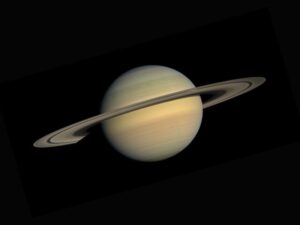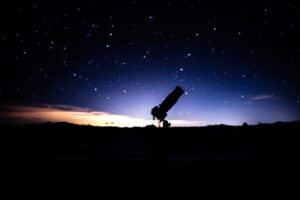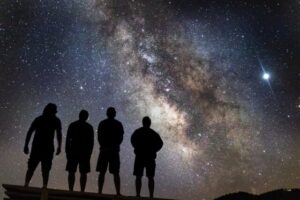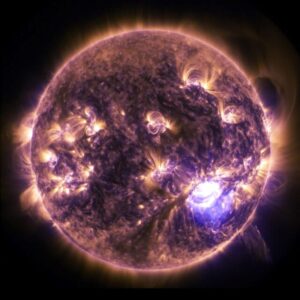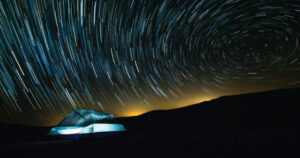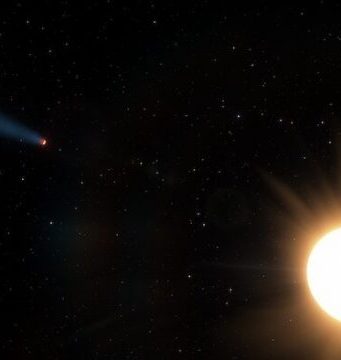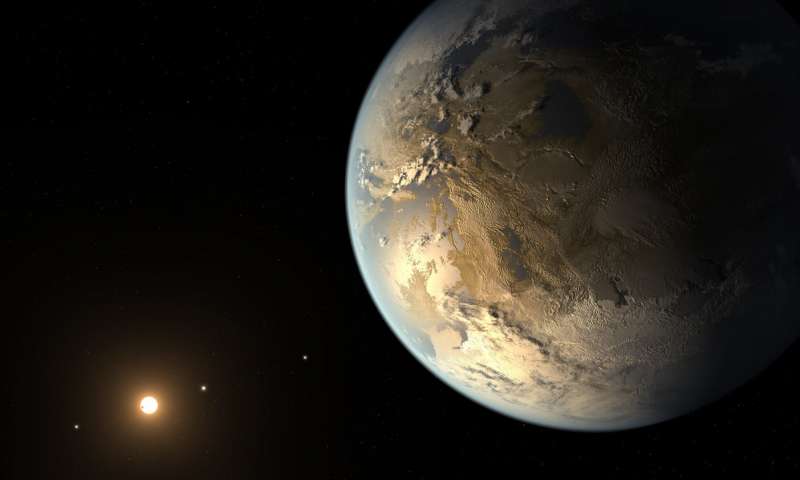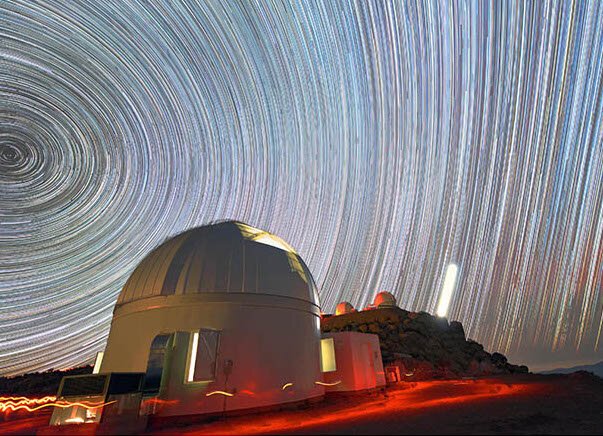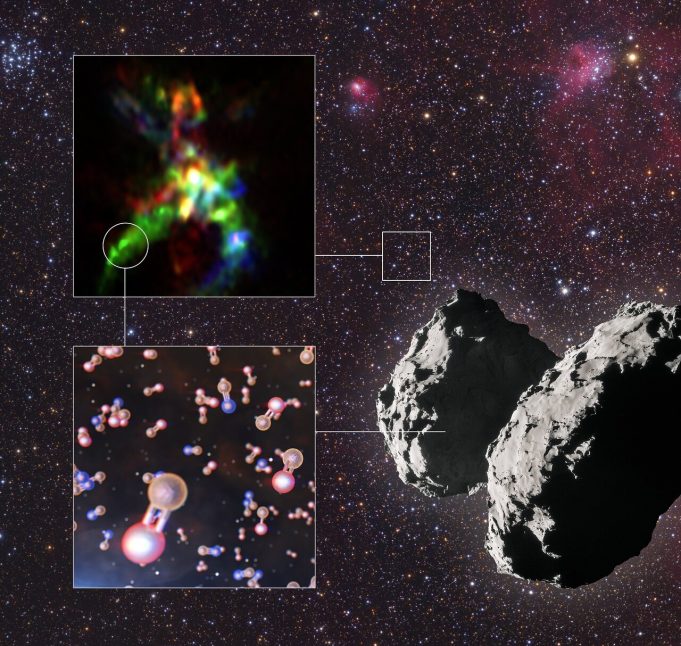The frames here show an example of an original galaxy image (left), the same image deliberately degraded (second from left), the image after recovery with the neural net (second from right), and the image processed with deconvolution, the best...
Credit: NASA/CXC/UA/J.Irwin et al.
This image shows the location of a remarkable source that dramatically flares in X-rays unlike any ever seen. Along with another similar source found in a different galaxy, these objects may represent an entirely new phenomenon,...
Left: Image of the Whirlpool galaxy and NGC 5195. Credit: Jon Christensen. Right: False colour image of NGC 5195 created by combining the VLA 20 cm radio image (red), the Chandra X-ray image (green), and the Hubble Space telescope...
This dwarf galaxy is named NGC 5949. It sits at a distance of around 44 million light-years from Earth, placing it within the Milky Way's cosmic neighborhood.
Credit: ESA/Hubble & NASA
The universe is incomprehensibly vast, with billions of other planets...
For thousands of years, humans have recorded sightings of mysterious comets sweeping across the nighttime skies. These celestial wanderers, "snowballs" of dust and ice, are swift-moving visitors from the cold depths of space. Some of them periodically visit the...
The mass of a very young exoplanet has been revealed for the first time using data from ESA's star mapping spacecraft Gaia and its predecessor, the quarter-century retired Hipparcos satellite.
Astronomers Ignas Snellen and Anthony Brown from Leiden University, the...
An image, taken by MESSENGER during its Mercury flyby on Jan. 14, 2008, of Mercury’s full crescent. Image: NASA/Johns Hopkins University Applied Physics Laboratory/Carnegie Institution of Washington
Around 4.6 billion years ago, the universe was a chaos of collapsing gas...
The path of a light beam is bent by the presence of mass, and a massive body can therefore act like a lens (a "gravitational lens") to distort the image of an object seen behind it. Scientists first confirmed...
Phosphorus, present in our DNA and cell membranes, is an essential element for life as we know it. But how it arrived on the early Earth is something of a mystery. Astronomers have now traced the journey of phosphorus...
Researchers from NASA and the Johns Hopkins University Applied Physics Laboratory in Laurel, Maryland, report that streams of meteoroids striking the Moon infuse the thin lunar atmosphere with a short-lived water vapor.
The findings will help scientists understand the history...
Many active galactic nuclei are surrounded by large, dark, donut-shaped clouds of gas and dust, as seen in this artist's rendering. A popular theory known as the 'unified theory' suggests that differences in the brightness of active galactic nuclei,...



